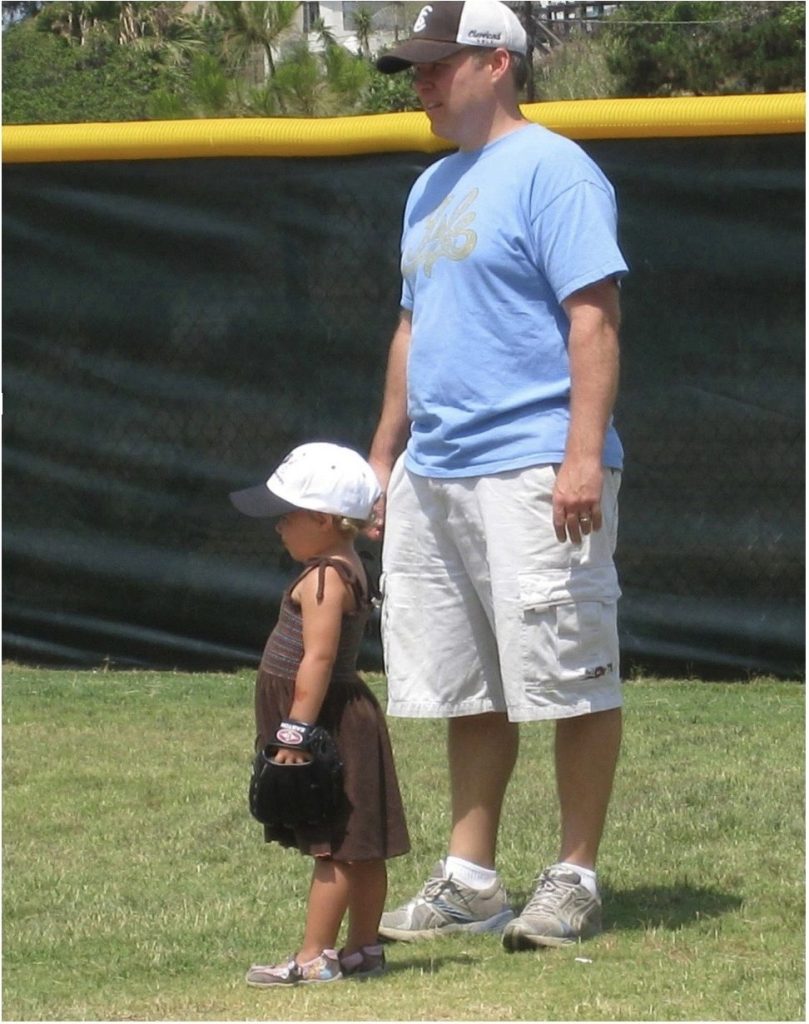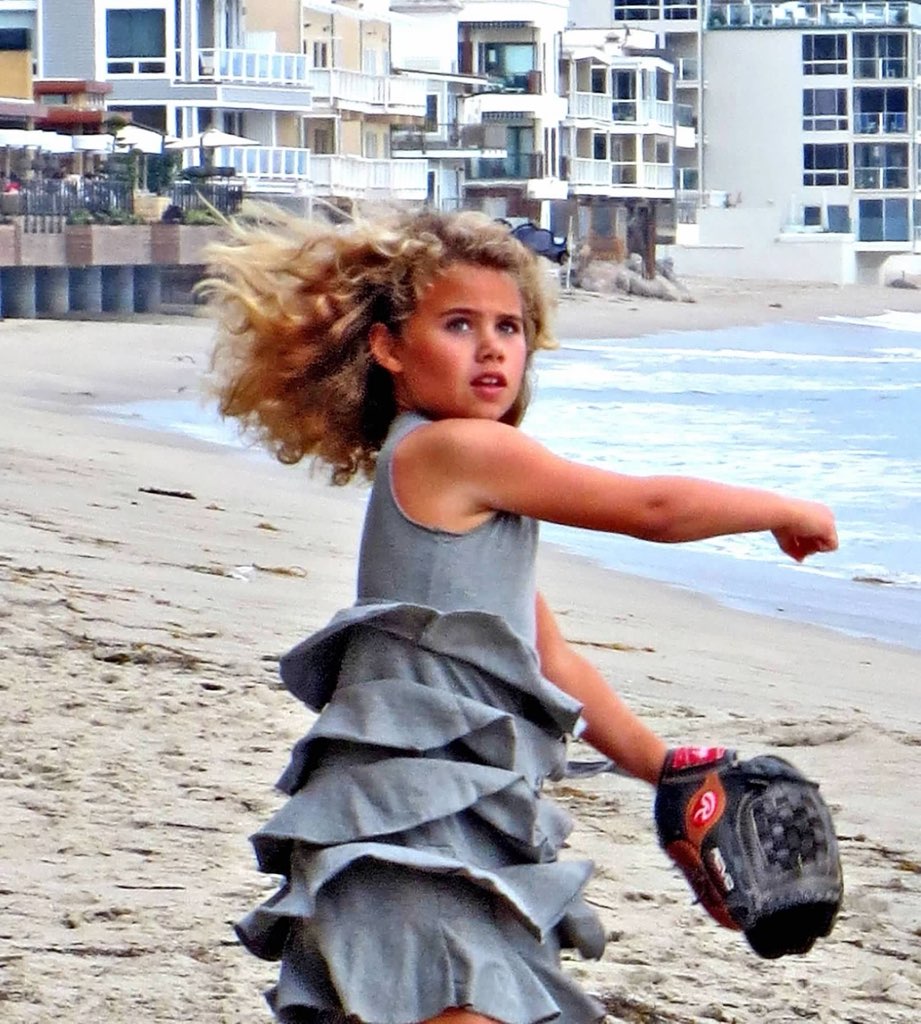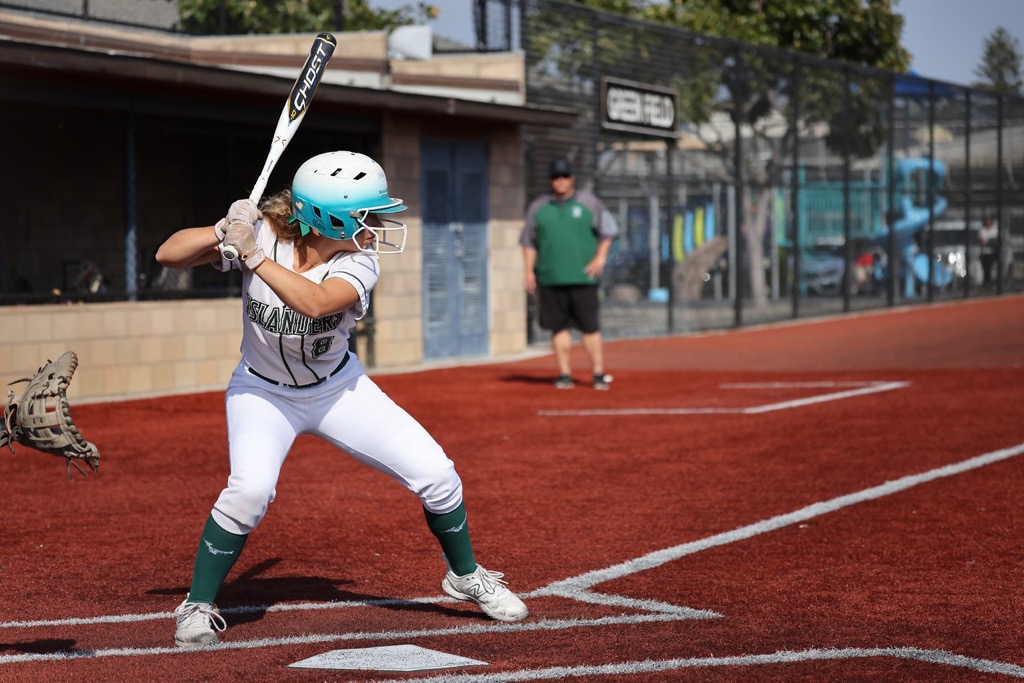
Multi-sport athlete, three-time class president, ASB Vice President, and exceptional student Susanna Pate graduated from Coronado High School in June and is headed to Cornell University this fall to play softball and study biology.
Pate’s father Bill predicted that Susanna would be competitively playing softball or baseball when Susanna was about four years old. Bill was in the backyard playing catch with her older brother Tommy when Susanna popped out of the house clad in a frilly dress and wanted the ball. Bill gently rolled the ball to his daughter. Susanna, in turn, picked up the ball and threw it as hard as she could back to Bill. “I was like, Oh really?” Bill said. From there, Susanna could be seen scampering around ball fields wearing her glove and baseball cap, ready to play at any time. When the family scheduled a photographer for photos on the beach, eight-year old Susanna was more interested in playing catch on the sand than sitting still for a pic.

Bill also coached Tommy’s Little League baseball team. “I didn’t really want to take her to two different practices (one for her brother and one for her),” he said. “I said, ‘Why don’t you just play with Tommy, and we’ll just do it that way?’ And she was all about it.” Bill credits those experiences playing baseball with developing her early skills and IQ for the game.
Softball Play
So began Susanna’s softball journey. Fast forward several years and the family moved from Mount Helix to Coronado. One day when she was about 12, a friend of Susanna’s asked if she wanted to join her for travel-team softball tryouts. Susanna threw on her baseball cap and uniform and joined her friend. Soon travel-team coach Scott Berndes was calling Susanna’s parents, excited about her play and asking her to join his Power Surge team. Getting selected to play on the team was a big deal. Contributing to the team’s success was an even bigger deal. In 2019, Berndes’ previously undefeated team finished as a finalist to the Birmingham Thunderbolts in the 12U Premier Girls Fastpitch (PGF) Tournament, the most coveted softball title in the country. Hosted in Irvine, Calif. and televised on ESPN, think of this tournament as the softball travel-team equivalent to the Little League World Series. In the championship game, Susanna singled, scored, and did some inspired base running, as the video shows.
Pate (#8 in blue) played on Power Surge, the 2019 12U Premier Girls Fastpitch tournament team that finished as a finalist. At about 1:07:00, watch as Pate singles. Then, at 1:09:25, watch the wild play that ensues that allows her teammate to score and Pate to reach third. Pate scores on the next at bat.
In high school, Susanna played shortstop for the varsity softball team all four years. She was named co-captain in both her junior and senior years. In that role, she was responsible for making sure girls knew how to position themselves, a task she relished whether playing for the high school or travel team. “On my team I call her the coach,” Berndes said. “She knows all the plays. She knows everything. … She is wonderful to have on the team.”
Named Offensive Player of the Year in her freshman, sophomore, and junior years, Pate made an impact from the beginning. Although she stands at 5’2″, “she hits home runs like a six footer,” said Berndes. “She just crushes the ball.” In her senior year, she was named the Most Valuable Player, and according to MaxPreps, led the team in most statistical categories, including Batting Average (.465), On-Base Percentage (.596), Stolen Bases (11), Fielding Percentage (.977), Runs (27), Hits (33), Homeruns (4), and Slugging Percentage (.802).

Susanna brings speed and agility to her game, along with eye-hand coordination. Sheer athleticism can make a player good, but to be great, players must also have a strong work ethic, and Susanna has just that.
In addition to team practices, she works with hitting coaches, and spends hours every week on her fitness. During the softball season a “typical” week looked like this: Gym workouts before school three times per week. Mondays were upper body, Wednesdays full body, and Fridays were heavy lifting on the lower body. After school every day, Susanna had a game, team practice and/or hitting lessons. On the weekends, more games, practices, workouts, lessons, and trips to the batting cages.
Her load of Advanced Placement courses meant two to three of hours of homework every night. And, she was committed to getting eight hours of sleep. Include a few hours for school, total those hours, and there isn’t much time remaining. Commitment is key, and Susanna demonstrated that through her rigorous training regimen. Berndes marveled at her dedication.
Variety of Interests
In addition to softball, Susanna was a sideline cheerleader for football and basketball in 9th, 10th, and 11th grades, and in her senior year was a starting guard on the varsity basketball team. She laughed as she shared her range of activities, recognizing the uniqueness of cheerleading for a team on which she subsequently played.
“Softball and also a cheerleader?” Berndes wondered. “You just don’t see that very often.” For Susanna, though, cheerleading supported her softball. “I bring a lot of spirit and energy to the team,” said Pate. “I am very loud in the dugout. … It’s just an interesting part of softball. It’s the only sport that has chants, so I love that part of the game.” Pate shared one of her favorites, shouted from the dugout once someone gets on base. “We want another one just like the other one: An instant replay. Replay! Instant!”
Although she only played high school basketball her senior year, her dynamic play and camaraderie inspired her teammates to name her co-captain. As the starting guard, her court vision allowed her to find the open player and skillfully distribute the ball. Her sharp eye, speed, and anticipation provided strength defensively as well: she led the team in steals.
Team play characterized Susanna’s focus throughout high school. Softball is her favorite sport because it relies on all nine players on the field. All of her sports, and most of her other extracurricular endeavors, require the ability to work together. Her favorite memories are of dinners and shopping trips with teammates.
Susanna also served as class president for her freshman, sophomore, and junior years, and as the ASB Vice President her senior year. And, when naming her three favorite courses? AP Biology, AP Calculus, and AP Physics. The choice to attend Cornell was intentional as it gave her the opportunity to both play softball and experience the challenge of academic rigor at an Ivy League school.
“She is a one of a kind,” said Berndes. “Her dedication is across many fronts. I have never had a girl so diversely dedicated, which is a wonderful thing.”
Family Affair
Susanna comes by her ball playing honestly. Bill played shortstop in college at Claremont McKenna, while Susanna’s mother Greta played softball at Coronado High. Greta and Susanna are the rare mother-daughter combination that earned MVP honors in the same sport at the same school. Susanna bragged about her mother’s speed and strong throwing arm.
She credits her dad with providing the encouragement, advice, and commitment to improving. And, remember older brother Tommy from the beginning of the article? Susanna shared that a friendly sibling rivalry went a long way to making her the player she is today. Tommy played high school baseball. “I probably wouldn’t be playing softball if he didn’t try it first,” she said. Not only did Tommy practice with her, she looked up to him and wanted to be like (and, ahem, better than) him. She credits that rivalry with motivating her to be the best player she can be.
Susanna plans to major in biology in hopes of becoming an orthopedic surgeon. Watch out Cornell and the Ivy League!


Softball Statistics
Fielding Percentage reflects the percentage of time a defensive player accurately handles a batted or thrown ball. To compute the percentage, add the number of putouts (that is, the number of times completing the out) to the number of assists, and divide by the number of total chances (putouts + assists + errors). For example, if a player has 20 putouts, 24 assists, and 2 errors, the player’s fielding percentage is (20+24)/(20+24+2), or 46/50, or .920. Technically, the percentage is 92% although most softball and baseball fans and players say, “Her fielding percentage is nine twenty” rather than “92 percent.”
Slugging Percentage reflects a player’s power. To compute the percentage, add the total number of bases made by the batter (one base for a single, two for a double, and so on) and divide by the number of at bats. For example, if a batter has 20 at-bats and hits three singles, two doubles, 0 triples, and one homerun, the slugging percentage is (3*1+2*2+0*3+1*4)/20, or 11/20, or 0.550 to reflect 11 bases the batter made in 20 at-bats. Technically, the percentage is 55% but most softball and baseball fans and players say, “Her slugging percentage is five fifty” rather than “55 percent.”




